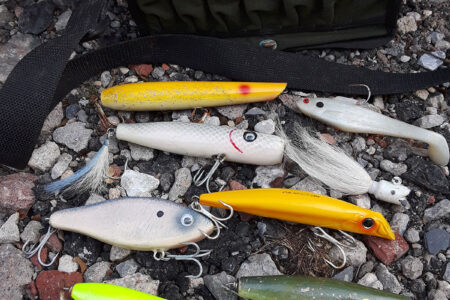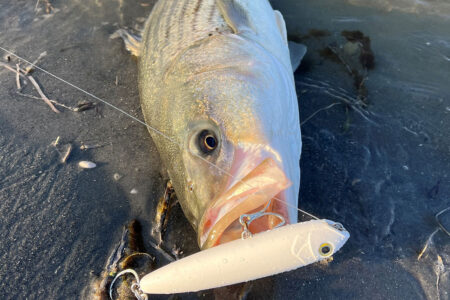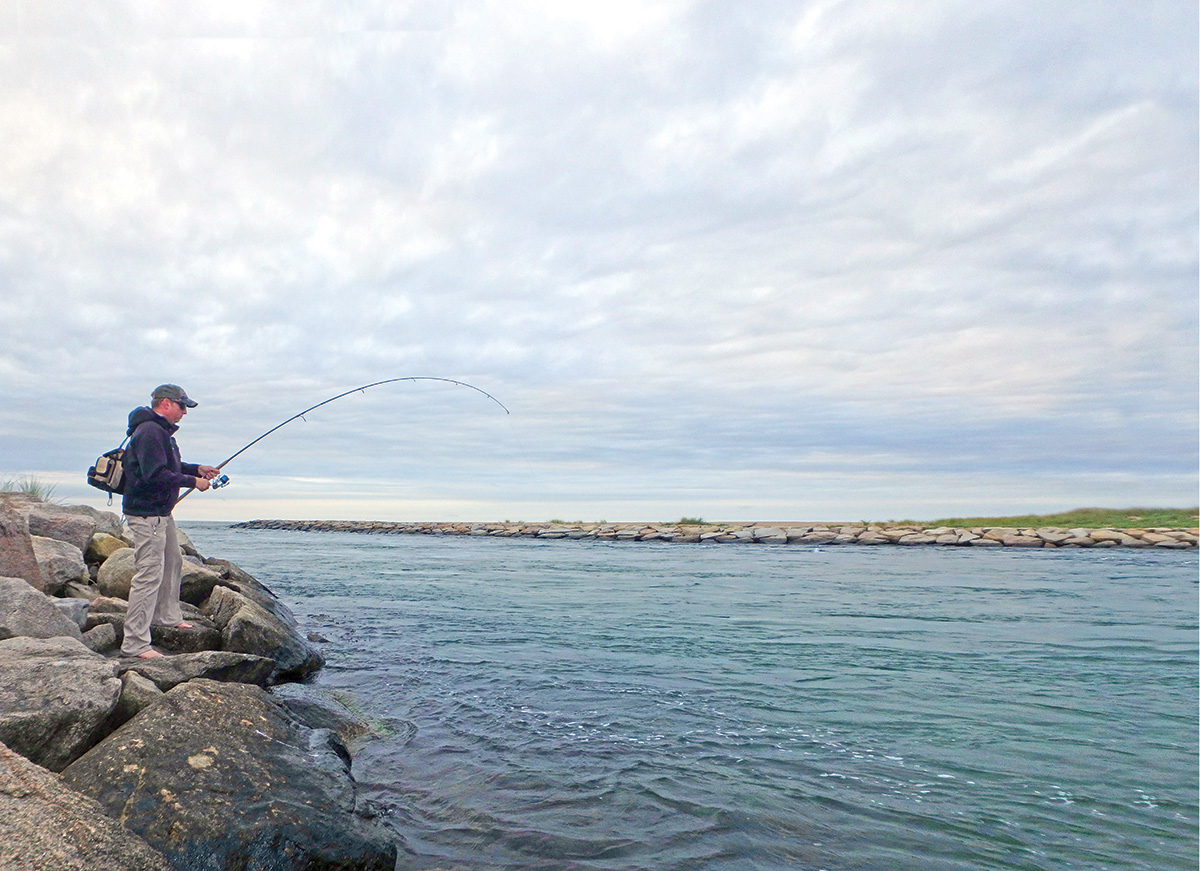
A consistent spot to score that last good bass or bluefish of the year in the surf.
Some of my earliest adventures in surf fishing took place years ago atop the rocky jetty walls that adorn the channels connecting the salt ponds from the ocean along the South Shore of Rhode Island. Many seasons passed when I logged in excess of 75 tides on a single jetty, and along the way I learned a lot of tips and tricks both through trial and error as well as through the generosity of the Old Guard, many of whom have now passed on to more fertile fishing grounds. While my schooling took place in Rhode Island, very similar locations can be found throughout New England. The outflows need not be overly large as outlined in “Sleeper Spots: Fish A Micro Inlet” by Jerry Audet, which appeared in the September issue of The Fisherman Magazine, and late-fall can be a great time to fish these spots.
In my early days I approached the striper-filled channels with little more than a few bucktail jigs and some pork rind or rubber curly tails and cast blindly into the running currents. I caught some fish, but over the years I refined my approach through hundreds upon hundreds of hours working those fishy spots and feel that I have a pretty good handle on how to fish similar locations up and down the striper coast.
First up, whenever possible you should time your arrival so that you either fish into slack water or out of it. Know that tide does not equate to current flow despite what some may incorrectly preach. Current and tide are in fact related, but they are in no way one and the same. An entire article could be dedicated to this subject, so let’s just say that the period of change is crucial to success in a jetty scenario. When fishing a new outflow, it is beneficial to future success to take note of when the current slows, stops and changes, and cross-reference this timing with the moon phase and weather conditions. A few simple notes today might make a world of difference tomorrow.
So as I noted, plan to be fishing, not arriving, into or out of the time when there is no current flow. Heck, even better yet, be sure to fish both into and out of slack whether on the high or low end. What is happening here is that as the current changes direction, there is a time period when there is little to no flow. This may last a couple minutes, or as long as 30 minutes, and it can be affected by wind, wave activity, moon phase and so on. The reasons it’s important are many, but the general theory is that predators will a) change feeding positons from one current direction to the next, and b) venture out from holding spots to feed. Also, there is often a surge of baitfish movement out of the back pond on slack as they no longer have to fight the strong current flow. This is especially true when mullet are present. Regardless of which reason puts your offering in front of a bass, do not overlook this stage of the tide!
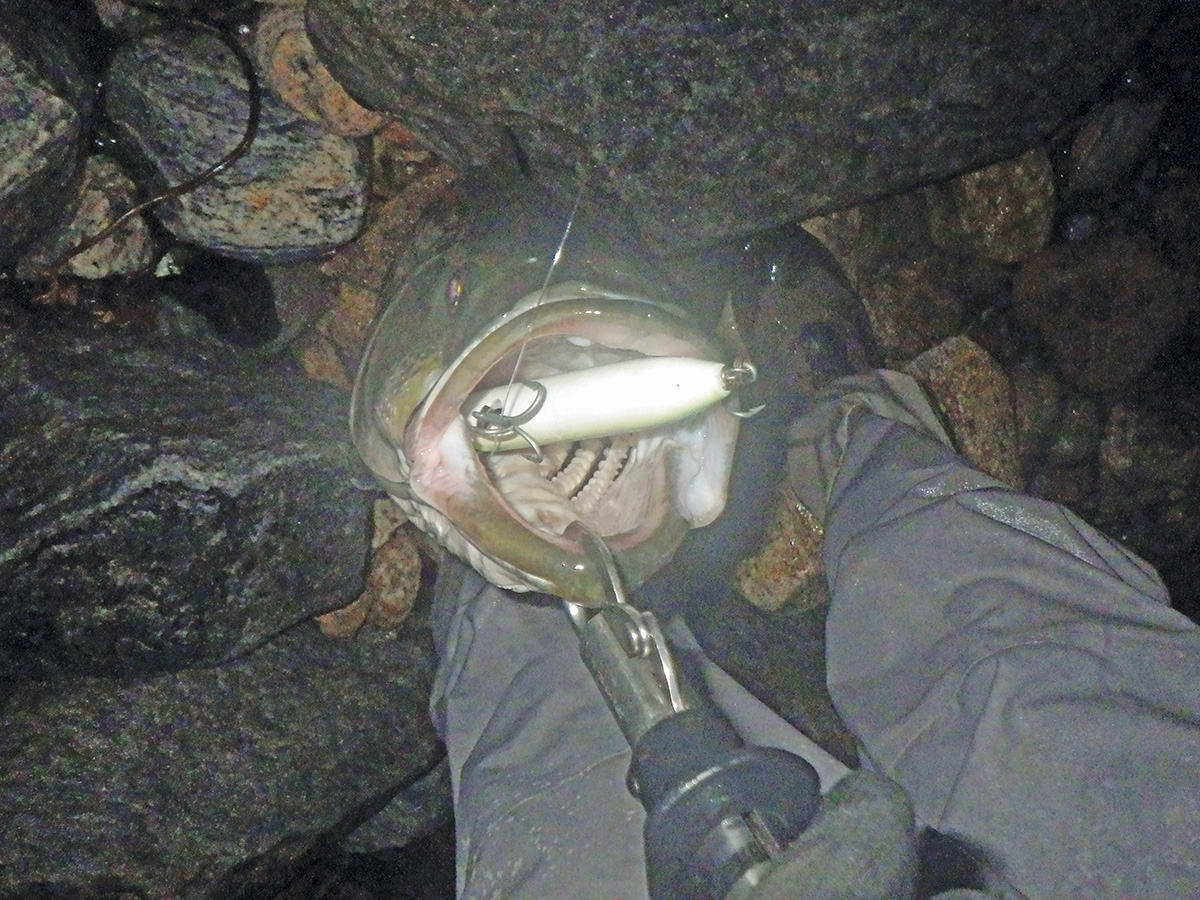
Where you set up to fish has a great deal of influence on your success on a given night. So often I have been fishing a jetty only to see an army of fishermen arrive to fish an outgoing tide and march right to the end of the rocks without prospecting along the way. While the end of a jetty—where plugs can be free-spooled out into the current—is one of the more social locations where surfcasters can choose to fish, I feel that it is actually the least productive as far as quality of fish is concerned.
A few nights before I put this article together, I decided to fish Quonochontaug Breachway. I arrived halfway through the drop and planned to stay through the low slack. Making my way down the sand trail, I could make out the headlamps of several anglers landing fish. I pulled into the parking area, finished gearing up and walked down the beach to the wall. Arriving at the rocks, I stopped momentarily to slide my Korker sandals over my knee-high boots. I clipped a 1-1/2-ounce bucktail jig onto one rod, and for the other a 2-ounce JoeBaggs Freedom Fish was the weapon of choice. Normally I wouldn’t fish with multiple rods, but the breachways afford the ability to work from a home base.
I began walking out on the rocks and was greeted by an angler hurriedly making his way back to his truck. I asked if he was leaving and he replied with, “No way, there’s a TON of fish out there! I need more plugs!” I hopped over several rocks, found my first casting perch from memory without the need for a light, and began casting into the channel with the bucktail. After a dozen or so casts I moved to the next casting rock, changed rods and began the cycle again. Eventually I reached the end of the jetty and found five anglers working the rip, landing some small bass here and there, but they seemed to indicate that the bite was fading quickly.
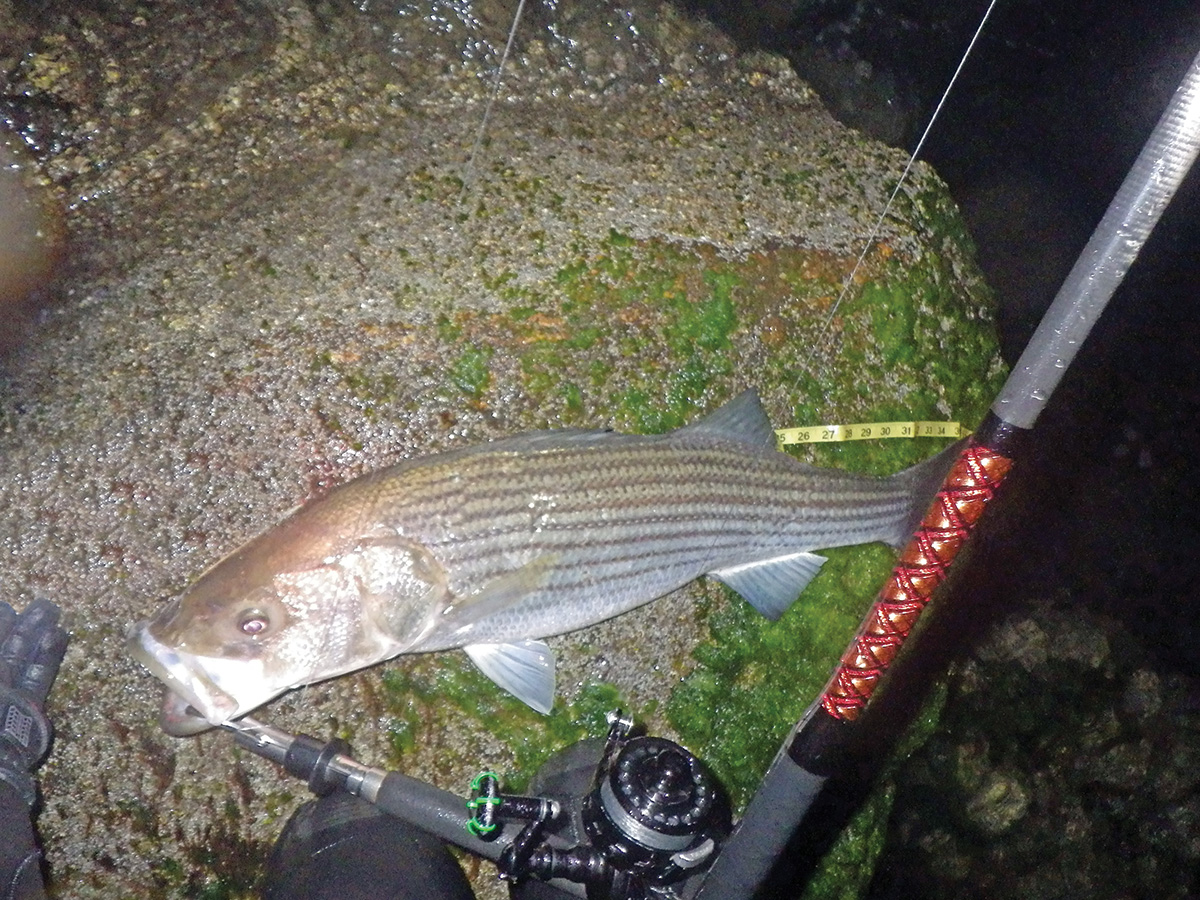
I eased down to my favorite rock and began working underneath the drifters, casting essentially under their feet. Every so often I glanced back and up and could make out the confusion on their collective faces, but it didn’t bother me in the past and it didn’t faze me this night. One by one they left as the bite had in fact died out in the rip, and I began to get a strike here and there—the fish had simply changed positons. I did my best to hide the signs of life that I had found, and eventually there was a single caster left behind to keep me company; I ended up landing a pair of bass pushing the 20-pound mark before the tide died out, changed and started back up again. This night the change was not all it was cracked up to be, but I felt good in knowing that I had stuck to my plan and pulled some decent fish for my effort.
While if given the choice I would prefer to cast nothing but jigs in an outflow, there is something to be said for drifting plugs. As noted above, I feel there is a better chance for bigger fish inside the channel, but that’s not to say there are never fish out front; far from it. My jetty bag always includes some swimming plugs such as JLH Skonrads, 7-inch Bombers and Red Fins, Super Strike darters, and most recently the Yo-Zuri Hydro LC Minnows.
Late-fall I have done well drifting plugs—but only after I thoroughly prospected the channel—especially when sea herring are in the area. While herring will move up inside the channel, it’s the passing schools that are attracted to the flowing current, and the ones that pass by way, way outside of casting range that the flowing current of a dropping tide helps me to mimic. Those big late-running bass and blues are not dumb, and they know the outflows attract herring, too. In this scenario I find that the bigger outflows produce better for me, probably because herring are more likely to find and enter the flows.
Last but not least, avoid the temptation to down-size your gear just because the daytime crowd is loading up on schoolies in the surf. I fish heavy tackle right to my final outgoing of the year, and working an outflow in November puts your lure into a much higher probability of connecting with that last cow bass or chopper bluefish of the season. While it might make for a good story to tell your friends the next day about the mystery fish that spooled you the night before, wouldn’t you rather land that trophy catch and have a photo to go with the tale? I know I sure would.

